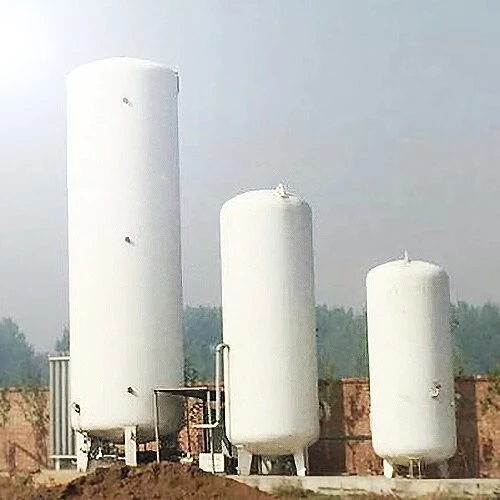Exploring Pressure Vessels Classification and Safety Accessories

Pressure vessels, essential components in various industrial applications, play a critical role in ensuring the safe containment and management of liquids, gases, and volatile substances. Understanding their diverse classifications, functional roles, and safety accessories is pivotal for designing, operating, and maintaining these pressure vessels effectively.
1. Pressure Vessels Classification: Based on Pressure
The categorization of pressure vessels is multifaceted, considering both the design pressure and their functional roles in technological processes.
Low Pressure (L) Vessel (0.1 MPa ≤ P < 1.6 MPa): Tailored for applications where maintaining pressures within this range is optimal, striking a balance between functionality and structural integrity.
Medium Pressure (M) Vessel (1.6 MPa ≤ P < 10 MPa): Engineered to handle moderate-pressure conditions, offering robust solutions for applications requiring elevated pressure thresholds.
High Pressure (H) Vessel (10 MPa ≤ P < 100 MPa): Crafted to withstand intensified pressure environments, ensuring resilience and safety under demanding conditions.
Ultra High Pressure (U) Vessel (P ≥ 100 MPa): Designed for extreme pressure scenarios, exemplifying structural stability and safety in the face of intense pressure conditions.
Medium Pressure (M) Vessel (1.6 MPa ≤ P < 10 MPa): Engineered to handle moderate-pressure conditions, offering robust solutions for applications requiring elevated pressure thresholds.
High Pressure (H) Vessel (10 MPa ≤ P < 100 MPa): Crafted to withstand intensified pressure environments, ensuring resilience and safety under demanding conditions.
Ultra High Pressure (U) Vessel (P ≥ 100 MPa): Designed for extreme pressure scenarios, exemplifying structural stability and safety in the face of intense pressure conditions.
2. Functional Classification: According to Purpose
Pressure vessels are also classified based on their role in technological processes, providing insight into their varied functions and applications.
Reaction Pressure Vessel (R): Devoted to physical and chemical reactions, housing reactors, decomposition pots, and polymerization towers. An integral component for industries reliant on reaction processes.
Heat Exchange Pressure Vessel (E): Specialized in efficient heat exchange, featuring heat recovery steam generators, coolers, and evaporators. Optimizing thermal processes for enhanced productivity.
Pressure Vessel Separator (S): Focused on fluid pressure balance, gas purification, and separation, incorporating separators, filters, and absorption towers. Essential for maintaining purity and integrity in various industrial processes.
Storage Pressure Vessel (C) or Container (B): Designed for storing and containing gases, liquids, or liquefied gases, offering diverse solutions through an array of storage tanks. A crucial element in industries requiring safe and efficient storage.
Heat Exchange Pressure Vessel (E): Specialized in efficient heat exchange, featuring heat recovery steam generators, coolers, and evaporators. Optimizing thermal processes for enhanced productivity.
Pressure Vessel Separator (S): Focused on fluid pressure balance, gas purification, and separation, incorporating separators, filters, and absorption towers. Essential for maintaining purity and integrity in various industrial processes.
Storage Pressure Vessel (C) or Container (B): Designed for storing and containing gases, liquids, or liquefied gases, offering diverse solutions through an array of storage tanks. A crucial element in industries requiring safe and efficient storage.
3. Comprehensive Classification: Adapting to Diverse Environments
A comprehensive understanding of pressure vessels extends beyond their primary functions, encompassing their classification based on usage scenarios.
- Fixed Pressure Vessel: Stationary vessels accommodating various working media, including spherical storage tanks, heat exchangers, and reactors. Preferred for applications involving hazardous chemicals that require a stable environment.
- Mobile Pressure Vessel: Dynamic vessels designed for transportation, often featuring tanks for flammable or toxic media. Commonly found in tanker trucks or railway tankers, offering mobility for diverse applications.
- Gas Cylinder Type Pressure Vessel: Encompasses high-pressure gas cylinders (e.g., hydrogen, oxygen) and low-pressure gas cylinders (e.g., liquefied petroleum gas). Exhibiting strong mobility, suitable for long-distance transportation and specific industrial uses.
Pressure Vessel Safety Accessories: Safeguarding Operations
Ensuring the safety of pressure vessels involves the incorporation of various safety accessories.
Safety Valve: A vital component that automatically releases excess pressure to restore equipment to normal working conditions. Strict guidelines prohibit alterations to the safety valve settings.
Pressure Gauge: Monitors working pressure, with a recommended range aligned with equipment specifications. Inclusion of a red line denotes the maximum allowable working pressure.
Rupture Disk: A safety device designed to relieve excess pressure, preventing potential hazards by rupturing under specified conditions.
Thermometer: Monitors temperature conditions within the vessel, contributing to overall safety and operational efficiency.
Level Gauge: Provides a visual indication of the fluid level within the vessel, aiding in monitoring and control.
Pressure Reducing Valve: Controls and regulates medium pressure, contributing to the safe and efficient operation of the pressure vessel.
Emergency Cutting Device: Swiftly shuts off valves and cuts off the air source in the event of a pipeline mishap, preventing the spread of accidents.
Safety Interlock Device for Quick-Opening Pressure Vessel: The quick-opening safety interlocking alarm device serves as a highly effective measure to prevent accidents in quick-opening pressure vessels. Its primary role includes:
a. Upon reaching the pre-set closing position, the interlock control initiates boost operation.
b. Once the internal pressure is fully released and the safety interlock disengages, the quick opening interlocking linkage becomes accessible.
c. An alarm function is synchronized with the mentioned actions.
b. Once the internal pressure is fully released and the safety interlock disengages, the quick opening interlocking linkage becomes accessible.
c. An alarm function is synchronized with the mentioned actions.
In conclusion, a nuanced understanding of pressure vessels is paramount for engineers, designers, and operators alike. From their diverse classifications based on pressure and function to their essential safety accessories, each aspect contributes to the overall efficacy, safety, and reliability of these critical components in industrial processes. As we continue to innovate and advance in technology, the role of pressure vessels remains pivotal, ensuring the seamless and secure management of pressurized substances across various industries.

